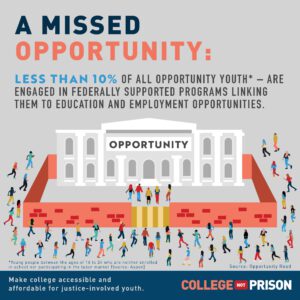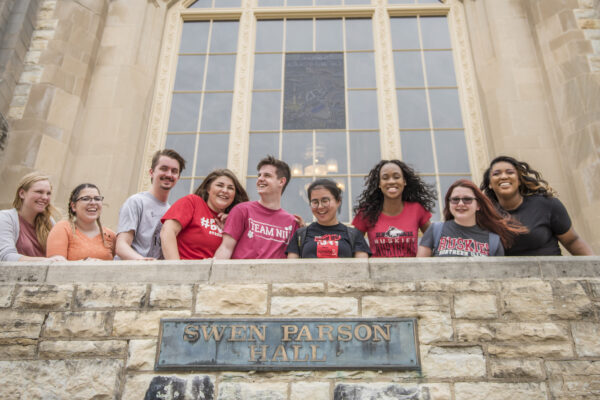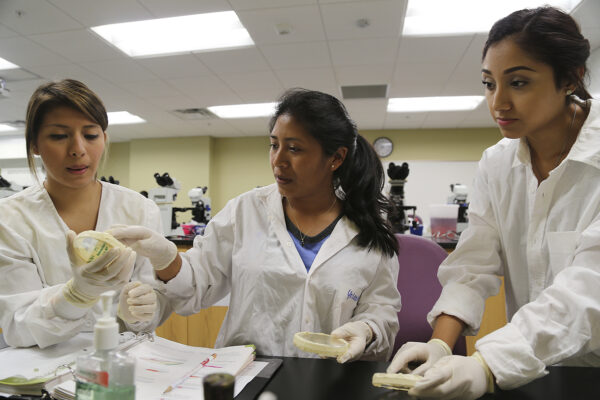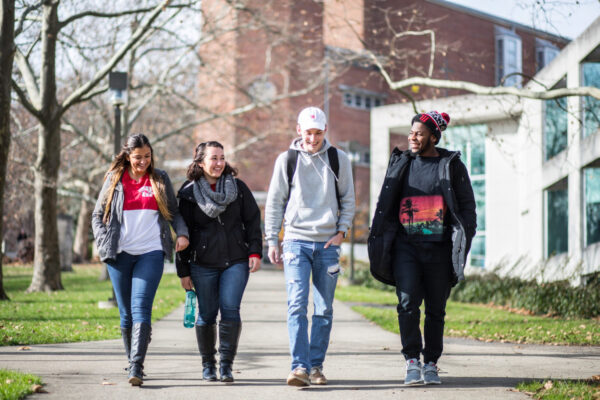By Julie Ajinkya, Allison Beer and Caroline Cox
This post is the fifth in a new series, Beyond the Margins: Meeting the Needs of Underserved Students.
We know that postsecondary education changes lives and provides a stepping-stone to prosperity. Though we recognize education’s transformative power, those who stand to benefit the most are often cut off from access. This is especially true for individuals impacted by the criminal justice system and looking for ways to improve their livelihood upon release. At the Institute for Higher Education Policy (IHEP), we are committed to driving commonsense policy reforms to support greater postsecondary access and success for the most underserved students, which certainly includes currently and formerly incarcerated individuals.
 As part of this effort, IHEP recently launched College Not Prison, a social media and public awareness campaign to educate policymakers, campus leaders, and the public about the financial aid barriers faced by justice-involved youth when pursuing postsecondary education. We also are working to engage policymakers at the federal, state, local, and institutional levels in critical conversations about how to better support reentering citizens in accessing postsecondary education, pursuing high-quality employment, and contributing to their communities as full citizens.
As part of this effort, IHEP recently launched College Not Prison, a social media and public awareness campaign to educate policymakers, campus leaders, and the public about the financial aid barriers faced by justice-involved youth when pursuing postsecondary education. We also are working to engage policymakers at the federal, state, local, and institutional levels in critical conversations about how to better support reentering citizens in accessing postsecondary education, pursuing high-quality employment, and contributing to their communities as full citizens.
On a recent research trip to Washington, we learned more about how that state is leading efforts to expand postsecondary opportunity for incarcerated and formerly incarcerated individuals so they can move on with their lives and make a decent living. Below we offer examples of strategies and evidence-based practices being employed in Washington to drive reform through legislation, to build partnerships to better align postsecondary education and workforce programs, and to improve reentering citizen’s education and employment outcomes.
Legislative Levers
The early 1990s ushered in a “tough on crime” era that focused on punishment instead of rehabilitation. Most notably, the 1994 crime bill introduced a federal ban on Pell Grants for incarcerated students, which resulted in hundreds of programs shutting down almost overnight. While some programs were able to procure state and private funding to continue offering courses to incarcerated students, some states also pursued the punishment paradigm and placed restrictions on state funds being used for postsecondary education in correctional facilities.
Recently, however, we have finally started to see some policy makers reach the realization that tough on crime policies are not effective strategies to improve public safety and rebuild strong, prosperous communities. In Washington, for instance, legislators in the state House and Senate recognize the need for reform and are working to overturn their 1995 ban on using state funds for college degree programs in correctional facilities. By passing these bills and with the Governor’s signature, lawmakers restored the ability to use state funding for workforce-centered associate degree programs in correctional facilitates and expand incarcerated students’ access to career training.
Not only is this a big step forward for Washington – where similar bills have failed to gain traction in the past—but this could also serve as an example for states across the country seeking strategies to both promote criminal justice reform as well as postsecondary completion agendas. Expanding access to postsecondary opportunities for incarcerated and formerly incarcerated individuals could help close significant equity gaps for some of the most underserved members of our community.
Learning and Employment Partnerships
In 2016, the Washington legislature established the Statewide Reentry Council to reduce recidivism and encourage collaboration between policymakers and families impacted by reentry of incarcerated individuals. Given that successful reentry requires healthy partnerships among many different stakeholders—including community organizations, the business sector, and higher education institutions—the Governor appointed fifteen members from the community to represent a variety of constituencies and organizations on the council.
One of the council’s strategies has been to establish a partnership between the Department of Corrections and the State Board for Community and Technical Colleges. Through this partnership, they work to align career training programs inside correctional facilities with those offered on community college campuses and uphold transfer agreements to support students who would like to pursue further education. As a result, students are able to take credit-bearing courses within correctional facilities and transfer their work to campus-based programs upon reentry. While many of the programs currently available to students within correctional facilities are centered on building industry credentials, policymakers and institutional leaders should also employ strategies to provide incarcerated students with opportunities to explore their academic interests as well as develop skills necessary for gainful employment.
Learning from the Field
In designing prison education programs, policymakers and practitioners can look to existing evidence-based practices to consistently improve measurable student outcomes for incarcerated and formerly incarcerated individuals. For instance, campus-based developmental education programs offer a wealth of information about interventions that are most likely to improve rates of student success. Just as students who have remained outside of the criminal justice system must develop college-readiness skills to be successful once they reach campus, students in correctional facilities also need academic supports and benefit from evidence-based developmental education programs.
 In Washington, most incarcerated individuals need additional support to improve basic reading and math skills necessary to be college and career ready. Correctional facilities in Washington are supporting these students by offering courses through evidence-based Integrated Basic and Education Skills Training (I-BEST) programs developed by the State Board for Community and Technical Colleges. By participating in these programs, incarcerated students are able to build foundational knowledge and hands-on job experience. To be sure, developmental education programs need to be tailored to meet the unique circumstances of delivering curriculum within a correctional facility. Nevertheless, incarcerated students, and our communities, stand to benefit greatly from developing academic and occupational skills needed for successful reentry.
In Washington, most incarcerated individuals need additional support to improve basic reading and math skills necessary to be college and career ready. Correctional facilities in Washington are supporting these students by offering courses through evidence-based Integrated Basic and Education Skills Training (I-BEST) programs developed by the State Board for Community and Technical Colleges. By participating in these programs, incarcerated students are able to build foundational knowledge and hands-on job experience. To be sure, developmental education programs need to be tailored to meet the unique circumstances of delivering curriculum within a correctional facility. Nevertheless, incarcerated students, and our communities, stand to benefit greatly from developing academic and occupational skills needed for successful reentry.
Washington is one state leading the way for policy reform at the intersection of the criminal justice system, postsecondary learning, and workforce training. Ideally, we will be able to use their stewardship in this field to build out the evidence-based foundation for better connecting currently and formerly incarcerated students to postsecondary education and careers. States should invest in sending more students to college. These investments will be a shared win for lawmakers, institutions, students, and communities. We must take this opportunity to change lives and create careers, which will ultimately boost our nation’s economy and foster strong communities.
If you have any questions or comments about this blog post, please contact us.





